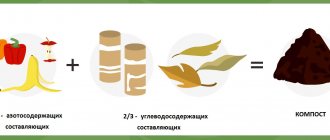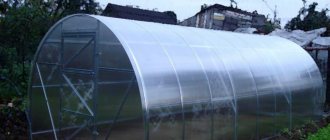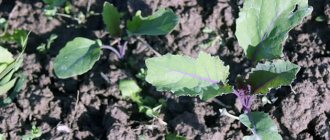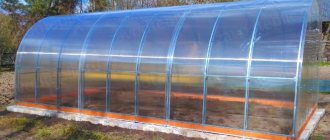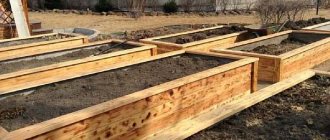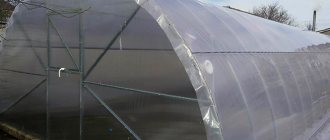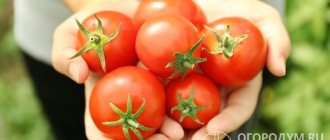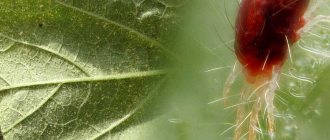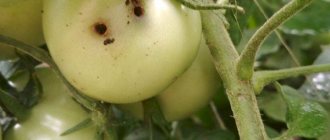Organic fertilizers help enrich the soil; moreover, they are natural and can be obtained at home.
One of them is compost, an excellent means for feeding the garden. Knowing how to speed up the maturation of compost, you can receive a “fresh portion” of fertilizers every year. While small and soft waste decomposes quickly, brown components take longer. On average it takes 12 months to mature. The pile laid this year will turn into fertilizer only by the next season. However, it is quite possible to significantly reduce the wait. And some secrets of starting a compost heap will help with this. And the use of special preparations will allow you to have ready-to-use organic matter in just a couple of months.
Baikal EM1
Perhaps the most popular microbiological preparation, which is used not only as an accelerator for compost maturation, but also as a “live” fertilizer for vegetables, fruits and ornamental crops. Baikal increases soil fertility and has a beneficial effect on the growth and development of plants, helping them absorb nutrients.
The composition contains various types of beneficial soil microorganisms: nitrogen-fixing and lactic acid bacteria, yeast, fungi, photosynthetic bacteria.
How to use Baikal EM1
The consumption of liquid concentrate for processing compost is 100 ml per 10 liters of water. For 1 sq.m of organic mass, 5 liters of working solution will be required. Compost treated with the drug matures in 2-3 months.
Methods for accelerating compost maturation
To quickly turn collected plant residues into organic matter and compost, you can use the following options:
- mechanical;
- biological;
- combined.
Mechanical method
The method is that compost is prepared naturally (self-decomposition). The method has a number of aspects, the observance of which will facilitate rapid composting:
- The process begins with grinding the plant components. The larger the waste (branches, twigs, rhizomes), the more thoroughly they are crushed. This manipulation will allow for better enrichment of them with water and air. The smaller the fraction, the more accessible its components are to moisture and oxygen, and the faster optimal parameters are created for the development of microorganisms, thanks to whose vital activity the composting processes take place;
- The second indispensable condition is humidity. To ensure rapid ripening, the collected waste should be watered and kept moist in a pile. This aspect is especially important if fresh household and vegetable waste is constantly added to compost that has already begun to ripen. It is more advisable to pre-ferment them and then pour them into the compost heap. Attention. If the rainy season is delayed, compost bins and piles are covered with film or tarpaulin. Such an event will prevent the leaching of microorganisms and useful substances;
- The size of the box or pile also matters. It has been experimentally proven that a box with a volume of a cubic meter is optimal. It is on such a scale that organic matter decomposes quickly;
- Air exchange. Oxygen is necessary for the growth and reproduction of microorganisms. To improve the access of air and the removal of gases that formed during the fermentation process, the pile is turned over, shoveled, or holes are made, piercing to the bottom of the pit.
Biological method
As a compost accelerator, ready-made microbes are used, which have already been industrially grown and supplied to the gardener in a liquid nutrient medium, packaged in bottles, canisters, flasks, or in a solid state.
Compost bacteria are nothing more than soil inhabitants obtained as a result of laboratory tests, and they should be added to the material for decomposition. They are:
- decompose plant residues, processing plant cellulose into components available for absorption by roots. After modifications, mineral and organic (proteins, carbohydrates, lipids, enzymes, vitamins) compounds can easily move through the vascular system and be transformed into a crop;
- The undoubted advantage of microorganisms for compost is that during the decomposition process they prevent the development of putrefactive and purulent microflora in the heap, which in turn improves the biocenosis of the soil;
- microorganisms that destroy cellulose secrete large amounts of mucous components. Thanks to them, soil aggregates stick together and the soil structure improves;
- yeast introduced into biological preparations produces valuable, active substances available for plant nutrition;
- bacteria are able to absorb nitrogen from the air, accumulate it in their cells and enrich the compost with it.
Biological preparations used for composting consist of several microorganisms (pure cultures) and it is with their help that a complex effect is produced on the compost.
Combined method
When testing means to speed up the maturation of compost, producers tried a variety of methods. The best option is obtained when raw materials are subjected to mechanical processing and then treated with biological preparations.
To prepare compost and quickly decompose, it is better to follow the proven instructions:
- Plants are crushed;
- Lay in a layer of 25-30 cm;
- Sprinkle the compost bed with the preparation “Siyanie-3” in the amount of ½ cup per m2;
- Moisten the pile thoroughly;
- Cover the top with 3-4 cm of garden soil.
You need to make 3-4 such layers in a heap. Next, the formed styling should be poured with the prepared solution of the “Shine-1” preparation. It should be done using the proportion of 100 g of concentrate per bucket of water.
Further work consists of wrapping. To maintain a constant temperature of at least 15 ᵒC, the compost heap is covered with plastic film or other non-woven material. If the planting was carried out according to the instructions, the compost will mature in 1.5-2 months, and by autumn it will be suitable for application to the garden.
The use of “Baikal” involves diluting 100 ml in a bucket of water.
How to choose a drug
When considering composting products, it should be taken into account that the contents of the containers are a living product. The composition of the microorganism culture may differ depending on the manufacturer, but the conditions of production, transportation and storage (in enterprise warehouses and retail outlets) as well as sales significantly affect the quality.
The concentration of beneficial microbes in compost media is millions of times higher than the number of soil microorganisms. However, if temperature conditions deviate, they die without ever ending up in the compost pit. It is not possible to check the organoleptic qualities, as well as conduct laboratory analysis. When choosing, ask the seller about the conditions for delivery of medications to the store and how they are stored.
Quality will be affected by:
- temperature below 10ᵒC and above 27ᵒC;
- direct sunlight.
Attention. The range of drugs is large, the market is crowded, but true biological drugs cannot be prepared in a homemade way. When purchasing the products offered, you must request a certificate for review.
The most effective, accelerating and worthy of the attention of gardeners are compost products:
If there is already a heap, how to speed up ripening
If the compost heap has been laid for a long time, but maturation is slow, then you can speed it up like this:
- Pierce the pile in several places (preferably to the bottom);
- Pour ½ cup of the “Shine-3” preparation into the resulting holes;
- Pour water into the holes;
- Pour the “Shine-1” solution (100 g per bucket of water) over the pile;
- Cover the processed pile.
If “Baikal” is used, then the heap is watered with a diluted product (100 cm3 per 10 liters of water) and covered with plastic film.
Making your own herbal infusion
The biological product can be prepared with your own hands using a pure culture and nutrient medium.
To create a basis for the life of microorganisms, you should do the following:
- The container (30 l) is filled 2/3 with chopped herbs, household food scraps, weeds, leaves, straw and any green vegetation, without compacting;
- Place 0.5 liters of sugar, jam or honey in a bowl;
- To enrich with nitrogen, add a liter jar of bird droppings or farm animal manure or 10 g of urea;
- To make the solution richer in phosphorus and potassium, add 250-300 g of stove ash;
- Add 100 g of the drug “Shine-3”;
- Fill the container with water heated to 25-27 ᵒC;
- Stir;
- The prepared mixture is covered with film to maintain the temperature and kept warm for 8-12 days.
The Shining 3
Microbiological fertilizer contains cellulose-processing bacteria and other beneficial microorganisms, which during their life processes process organic waste into valuable vermicompost. Can be used at any time of the year.
How to use Radiance 3
To process 1 square meter of compost, take half a glass (100-125 ml) of the dry preparation Siyanie 3. A layer of organic matter 20-25 cm thick is sprinkled with powder, then 5-10 liters of water are spilled and sprinkled with soil from the site (layer height no more than 2 cm) . After this, the compostable mass is compacted and covered with dark polyethylene. In warm or hot weather, the compost will be ready in 3 weeks; in the cool season, the ripening process will take 4-5 weeks.
Proper mixing of components
Additives to increase the speed of compost maturation and achieve properties should be used in proportion to nitrogen and carbon fertilizers. Violation of proportions will lead to the dominance of characteristics that hinder the increase in yield: excessive acidity or alkalinity, for example.
| Supplements | Color | Examples |
| Nitrogen | Green | Amide, ammonia, nitrate mineral additives. Manure, urea, saltpeter, freshly cut grass or leaves, leftover vegetables and fruits, chicken droppings, dried flowers. |
| Carbon | Brown | Old (last year's) dry leaves, straw, paper, ash, sawdust, quicklime or carbonate lime, branches. |
The proportional ratio used between nitrogen and carbon additives is 4 times less nitrogen.
Ekomik Dachny
This biological product in liquid form contains lactobacilli, actinomycetes, enzymes and biologically active substances that can break down organic matter, including fiber and cellulose. Active microorganisms convert plant residues into humus and promote its mineralization.
Lactobacilli remain viable at various acidity and humidity levels, which ensures high efficiency. During their metabolism, actinomycetes produce antibiotic substances that suppress the growth and reproduction of pathogenic flora - this ensures the elimination of unpleasant odors and the possibility of using the product not only for composting waste, but also for servicing country toilets.
How to use Ekomik Dachny
To speed up the preparation of compost, 100 ml of the drug is diluted in 10 liters of water. This solution (at the rate of 5 liters per 1 sq.m.) is poured over a layer of organic matter 20 cm thick and covered with film. After this treatment, the compost matures in 2-4 months. The drug can also be sold in the form of a dry substance - in this case, the contents of the package are dissolved in a bucket of warm water.
Homemade organic destructors
Homemade bokashi is prepared with rye or wheat bran. In 1 liter of water dilute 2 tbsp. spoons of EM preparation (Baikal, Shining) and 1 tbsp. a spoonful of sugar or jam. The solution is kept for 30 minutes, the bran is moistened until it becomes lumpy, the mixture is placed in a bag, tied tightly, releasing air, and left to ripen for 7–14 days in a dark, warm place. The finished mass has a fruity smell. It is dried and used in the same way as the product from the manufacturer.
Video: how to make bokashi yourself
Folk remedies:
- Herbal infusion - combine grass, chicken droppings and water in a ratio of 5:2:20. They insist for a week.
- Yeast infusion - a mixture of 3 liters of warm water, 0.5 cups of sugar, 1 teaspoon of any yeast is fermented, brought to a volume of 15 liters with water. To maintain the calcium balance, first the pile is watered with ash infusion: three liter jars of ash are infused for 24 hours in 10 liters of warm water, filtered. Take 1 glass of infusion per bucket of water.
- Urine of animals and people, diluted four times with water.
Embiko
Compost prepared using the Embiko biological product is characterized by a high content of useful microbiological mass. An organic destructor reduces nitrogen loss during the ripening process and converts it into compounds that are easily absorbed by plants. In addition, the drug suppresses the activity of pathogenic and opportunistic bacteria, and therefore is able to eliminate the smell of the compost heap.
How to use Embiko
Embiko is sold in the form of a ready-to-use solution in 5 liter and 10 liter bottles. To prepare 1 cubic meter of compost, 100 ml of liquid is enough. Ripening of organic mass occurs within 6-8 weeks, and in some cases (at favorable temperature and humidity) it is reduced to 3-4 weeks.
How to make compost?
Laying a compost pit begins with making a box. You can buy a plastic one, make a wooden one yourself, or dig a regular hole. In the latter case, the place is equipped with wooden logs. The material is placed in layers. You can also place them in any order. The main thing is to ensure oxygen access from the top and sides of the compost heap.
It is possible to place the “compost” on the surface of the earth. A recess is first dug for the bayonet of the shovel. Branches of bushes or trees are laid at the bottom. Next comes the compostable material. The pile is surrounded with boards or netting to give it shape. The top of the structure is covered with earth.
The formation of a compost pit occurs as follows:
- Hard raw materials are crushed into smaller parts. The soft is mixed with the hard to achieve the necessary looseness.
- The thickness of each layer varies within 15 cm. Thicker rows will make it difficult for air to penetrate inside.
- Very dry raw materials are first wetted with water.
- 700 grams of lime are poured onto the top of the next layer. It would not be superfluous to add 300 g of ammonium sulfate and 150 g of superphosphate to each row. The first component can be replaced with bird droppings at the rate of 4.5 kg of the latter instead of 450 g of sulfate. Wood ash replaces lime. Urea will add value to the final rotting result.
- The normal size of a compost heap is approximately 1.5 m2. With such proportions, the optimal ratio of temperature and humidity inside is maintained.
- When the heap reaches a height of 1.5 m, it is covered with earth to a level of approximately 5 cm.
- The laid layers are covered with film or other waterproof material.
It is necessary to ensure that the compost heap is moderately moist.
How to choose a place for a “compost”?
A shady area that does not receive direct sunlight is an ideal location for the compost bin. In such conditions, the required humidity is easily maintained. Moisture promotes a large accumulation of worms and woodlice: the presence of beneficial insects ensures a uniform decomposition process.
It is better if there is not one, but two or three heaps on the site. You should not arrange a place next to trees: powerful roots will draw out all the useful substances from the future fertilizer.
Composition of the compost pit
The basis of any “compost” is mowed grass, leaves without signs of diseases or the presence of pests. Rotting food waste, paper without paint, leftover tea and coffee, egg shells, vegetable and fruit peels, and seed husks are suitable. The more diverse the composition, the more useful elements the future fertilizer will contain.
You need to be very careful when choosing individual types of grass. Aggressive perennial weeds can germinate and colonize inside the compost heap. They should be folded separately and covered tightly with film. In a separate pile, the chances of germination of such weeds are significantly lower.
It is not advisable to send meat, animal fat, potato peelings, or plants with pests or diseases for processing. It is unacceptable to introduce materials that cannot rot.
You should not put citrus peels, the remains of coniferous trees and animal bones in a pile: such waste rots for a very long time and disrupts the conditions for normal compost maturation.
Maintaining a moisture balance is a guarantee of rapid and high-quality decomposition. If there is an excess of moisture, stir the contents; if there is a lack, water it. Turning is also necessary for oxygen to enter the heap.
Tamir
This drug is a complex of 86 types of beneficial soil microorganisms that can process and ferment organic waste. It is used as a biodestructor in more than 80 countries around the world and is included in the technological cycle of livestock complexes and farms - to eliminate unpleasant odors, dispose of waste and obtain high-quality fertilizer. It can also be used for tillage after harvesting, because quickly decomposes plant residues and prevents the proliferation of weeds.
How to use Tamir
To speed up composting, the liquid is diluted with warm water in a concentration of 1:100, and the resulting solution is used to moisten the compost heap at the rate of 5-7 liters per 1 sq.m of organic mass. Mature compost can be obtained 2-3 weeks after treatment with Tamir.
Don't turn your compost pile into a rodent feeder.
Do not throw edible scraps such as meat, leftover pizza, or missing cheese into the compost heap. The rats living in the area will see this as an invitation, and may choose your compost pile for a warm and safe home. To prevent this from happening, it is necessary to limit the content of edible waste in the compost. When occasionally adding orange peels or vegetables to the compost mass, place them as deep as possible, close to the hottest point of the pile. There they will break down into useful compounds much faster. In addition, it is better to have a special container for composting that is securely closed on all sides, including the bottom, then rodents will not be able to get between the tightly fitting slats.
EM-Bokashi
The drug in powder form contains fermented wheat bran, seaweed and other beneficial microorganisms (fermentative fungi, yeast, lactic acid bacteria). The complex effect of these components accelerates the process of breakdown of organic waste, and in addition, eliminates the unpleasant putrefactive odor.
How to use Bokashi
Bokashi powder consumption is 100-200 ml per 1 square meter of surface, or 100 g of substance per 10 kg of organic mass. The powder is evenly distributed over the surface of the compost heap, spilled with water and a layer of garden soil 5 cm thick is poured on top.
Components that cannot be added
You can't throw everything on a pile. Not every paper is suitable for safe rotting. Do not place printing, newspaper or other paper containing dyes. This also applies to non-degradable items and materials. Not all leaves are suitable for filling a compost bin. Just like weeds. Walnut foliage is too dense and poisonous for some crops. It also cannot be burned openly due to the acrid smoke.
There are plants that are poisonous to living compost bacteria. Such types can stop the debate process. Here are a number of plants that should not be added to the ripening heap:
- lily of the valley;
- digitalis;
- aconite;
- yew;
- broom;
- walnut (shoots, branches, leaves);
- citrus;
- peeling ginger root.
There are a number of plants that can rot and then sprout directly on the compost heap. Therefore, it is not recommended to put them in fermentation. These varieties include:
- dandelions;
- bindweed;
- spiky speedwell;
- common whine;
- horsetail;
- fragrant butterbur;
- creeping wheatgrass;
- Japanese knotweed;
- knotweed;
- spring clean.
It is strictly forbidden to place diseased plants, rotten fruits, vegetables, especially those with white coating or mold on the pile. A warm and humid environment will create favorable conditions for the development of pathogenic bacteria. The only diseases that are killed by the process of overheating herbs and crops are:
- powdery mildew;
- moneliosis;
- rust.
The accumulation of chemicals in the beds can be avoided if you listen to the advice of expert agronomists - do not put into the processed organic fertilizer those weeds and herbaceous crops that have previously been treated with herbicides or other chemicals against pests or diseases. It is not recommended to add potato peelings from vegetable peelings - they release unhealthy substances. It is unacceptable to put meat or animal fat into compost.
Doctor Robik 209
The preparation in powder form contains a complex of microorganisms that can work even in conditions where the technology for proper preparation of compost is not followed. Excess or lack of moisture, temperature fluctuations, or lack of oxygen will not prevent beneficial bacteria from doing their job.
How to use Doctor Robik 209
Before using the product, the compost heap must be watered, then the contents of the bag (60 g) should be scattered over the surface, sprinkled with soil from the garden and mixed. One sachet of product is enough to process 1-1.5 square meters of compost; it is recommended to repeat the procedure once a month.
How to make a compost heap faster than rotting - video
Special industrial preparations help speed up the maturation of compost several times. If it is not possible to use ready-made industrial production means, you can try traditional methods of accelerating the decomposition of organic matter.
- Author: Larisa Fursa
My name is Larisa. I am a copywriter with extensive experience, the mother of two wonderful daughters. I am interested in photography, I cook well, I like to go to the country. Rate this article: (1 vote, average: 5 out of 5)
Gumi-Omi Compostin
This liquid preparation, in addition to beneficial bacteria, contains humic components, nitrogen fertilizers and fermented organic matter (usually chicken droppings). All these additives help create the nutrient medium necessary for the life of microorganisms.
How to use Gumi-Omi Compostin
To obtain a working solution, 50 ml of the drug is dissolved in a bucket of water (10 l). This volume is enough to process 50 kg of compostable mass.
Under a covering layer of soil, compost ripening lasts 1.5-2 months, and if you use a dark film, the process will go even faster, and you will receive ready-made compost in a month.
Accelerators from the world of eukaryotes for lazy summer residents
If you don’t want to bother with transferring fertilizer, you can delegate all the work to earthworms. They eat organic matter and process it into coprolites, a valuable concentrated agricultural fertilizer. To feed plants, you need three times less of this mixture than regular compost, and the yield increases by 50%.
The most valuable in terms of speed are the red Californian worms. They are extremely voracious and prolific, which plays into the hands of gardeners who are concerned about how to speed up the processing of compost.
With this method, plant debris is added in small portions and the worms are released. After two weeks, everything will be eaten and the adults will begin to starve.
Then a new portion of food is poured on top of the finished compost and all the worms crawl into the top layer. The lower one can be used to feed plants. To do this, the design of the pile must have a door at the bottom to select the finished fertilizer.
It is necessary to monitor the moisture content of the raw materials, as worms need liquid. The layers should not be compacted tightly in the pile so that there is constant air access.
If you add bread, it can attract mice and hedgehogs that feed on earthworms, so this is not recommended.
The finished vermicompost must be mixed with the soil before fertilizing, since its pH is very high and can harm plants that prefer slightly acidic soils.
Oxyzin
The biological product Oxyzin is produced by fermenting sugar beet molasses. The microorganisms included in its composition are capable of processing plant residues into humus, as well as breaking down weed seeds, eliminating the possibility of their germination.
How to use Oxyzin
The solution is available in 20 ml bottles with a dropper. Consumption per 100 kg of organic mass is calculated as follows: 40 drops per 1-1.5 liters of water. It is recommended to water the compost heap using a small watering can or spray it in layers.
Compost matures under the influence of this drug in 3-5 weeks. For greater efficiency, it is recommended to shred the waste before storing.
The main problems that arise during the compost maturation process.
The biological process does not always go smoothly. The following difficulties may arise:
- There are ants inside the compost heap. This is a sure sign of lack of moisture - you should water the mass.
- The compost heap smells unpleasant. The phenomenon occurs due to the fact that a significant amount of soft elements is embedded. It is necessary to turn over the compost pile and add straw, paper or dry leaves.
- There are too many midges hovering over the compost heap. The problem arises due to excess moisture - the mass must be dried. To do this, it is left open for several days.
- There are no processes observed inside the compost bin. In this case, there is not enough moisture or moist elements. The pile should be shed or green grass should be added.
Compost is a valuable organic fertilizer. In order for it to rot correctly and bring maximum benefits, you need to know the features of its preparation and feeding.
Source: superurozhay.ru
Compostello
This ripening accelerator, in addition to its main function, is able to eliminate and inhibit the growth of pathogenic microbes in the compost, thereby eliminating unpleasant odors. The microorganisms contained in the preparation are able to work at a temperature of 10°C and break down even weed seeds into useful biomass.
How to use Compostello
One sachet of the drug (60 g) is dissolved in 20 liters of water and infused for 30-45 minutes. The prepared solution must be used throughout the day. High-quality mature compost can be obtained in 6-8 weeks.
Benefits of biomass
The preparation of fertilizer is carried out in such a way that soluble organic salts combine with organic substances, which limits the possibility of their leaching. Compost is characterized by the fastest and highest quality absorption of moisture. Humus also produces air exchange. Thanks to the presence of such properties, the upper layers of the soil are revived and saturated with useful microelements. Thanks to the presence of urea, the soil is saturated with nitrogen.
During the application of humus, a change in the structure of the soil is ensured. When using this fertilizer in clay soils, their loosening is ensured, as well as high-quality water exchange. When humus is used in sandy soils, moisture and nutrients are retained. Compost consists of a large amount of humus. This leads to the fact that the soil is saturated with beneficial inhabitants - beetles, earthworms, etc. When fertilizer is used for garden crops, birds return to them and eliminate harmful insects.
Method of use of EM preparations
It is recommended to dilute all destructor drugs in warm, non-chlorinated water (optimal temperature from 25 to 32°C) - you can take spring or rain water. If there is no access to these sources, then tap water should be allowed to stand for 48 hours.
Typically, each 15-20 cm thick layer of compost is sprinkled with a ripening accelerator. If the preparation is in powder form, then it is scattered over the surface of the compost heap and watered with water. Then sprinkle with earth or mulch (5 cm layer) and cover with agrotextile on top. This is important to achieve optimal temperature and humidity levels at which beneficial bacteria can work effectively.
An exception to the general rule is the drug Baikal EM - it can also work with a single use. In September, the destructor is poured into a hole in the middle of the finished compost heap, which is then insulated for the winter. In this case, the water for diluting the drug is taken almost hot - at a temperature of 35-40°C.
A huge advantage of biological products is that they are completely non-toxic and safe for people, animals, and the ecosystem as a whole. This is why products based on live bacteria are gaining popularity among summer residents and gardeners.
Accelerating the ripening of compost is just one of the useful functions, and pleasant “side effects” of the work of effective microorganisms will be increased plant immunity, improved quality of fruits in garden and vegetable crops, and increased productivity.
Bacteria are the basis of life
Precellular life forms - bacteria - are intermediaries in the food chain of all living organisms on the planet. There are species that are able to survive without oxygen, in toxic conditions unsuitable for humans - hydrogen sulfide and arsenic. Others use air for life - the more of it, the faster microorganisms multiply.
People have partially learned to use bacteria for their own purposes. One of them is improving soil quality by processing plant residues - tops, roots, as well as dead animals and insects. Bacteria also process paper, cellulose, and feces in wastewater.
By adding a concentrate of microorganisms, you can speed up the maturation of the compost. Instead of 2 years, you will have to wait 6 months, and in some cases less. This product for compost pits will always allow you to have inexpensive but nutritious fertilizer on hand, which is especially necessary when practicing intensive farming. The question is how to speed up the maturation of compost at the dacha, using purchased and homemade preparations to be sure of success.
The procedure for laying a compost heap
- To perform the drainage function, line the bottom of the compost bin with cuttings of hard branches, logs, spruce branches, turf, etc.
- Next, lay out organic residues, preferably only 20 centimeters thick.
You can treat the tops with a 5% urea solution, since pathogens of fungal diseases may remain on them (solution consumption - 1% of the total mass of greens). The plant mass is covered with garden clay soil and cow manure, approximately 2 centimeters each. This layer activates the combustion process inside the compost bin.
Decomposition phases
Compost components decompose in several stages:
- The first phase is called decomposition, when all substances warm up to +70°C, and weed seeds and pests die.
- Reconstruction. The temperature drops to +35°C, and fungal organisms develop in the compost heap, which contribute to the decomposition of the components.
- The third phase is called synthesis. Insects appear in the compost, accelerating the process.
- The next stage is maturation. The temperature of the heap stabilizes, the components acquire a loose consistency and natural aroma .
- The last stage is called humification.
Properly prepared compost should have a uniform consistency and a dark shade. The entire maturation process takes 1-2 years. If any remains have not had time to decompose completely, they can be placed in the next pile or used to insulate spring beds.
You can also plant pumpkins or zucchini on the remaining compost. In this case, yield indicators will be record high.
To speed up the composting process, you should regularly ventilate the pile or maintain the aeration process. To do this, you can stir or throw the components with a pitchfork. But since such an action requires a lot of effort, it is recommended to place long sticks in the pile every 30 cm and periodically shake the compost with them.
Some farmers place a piece of polyethylene or asbestos cement pipe in the center of the compost pit and make holes in it. During the process of decay, the product will become part of the fertilizer, but at the same time saturate the pit with oxygen and nutrients.
To get good compost, it is important to regularly moisten it and saturate it with useful additives. If the heap contains foliage or coniferous residues, you need to dilute it with nitrogen-containing components. If the top dressing consists of weeds or lawn grass, apply fertilizers based on phosphorus and potassium.
To improve the quality properties of fertilizing and speed up the ripening process, eggshells and ash should be used.
